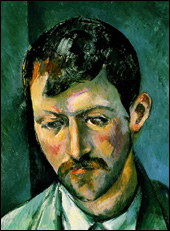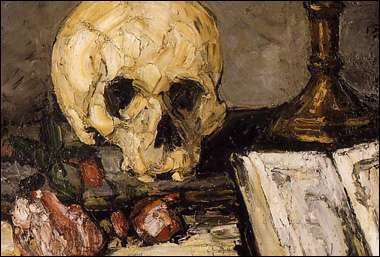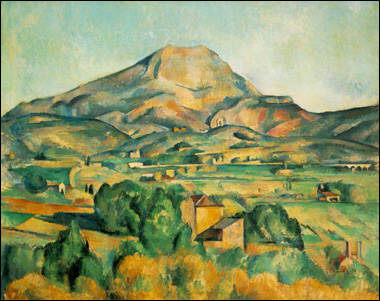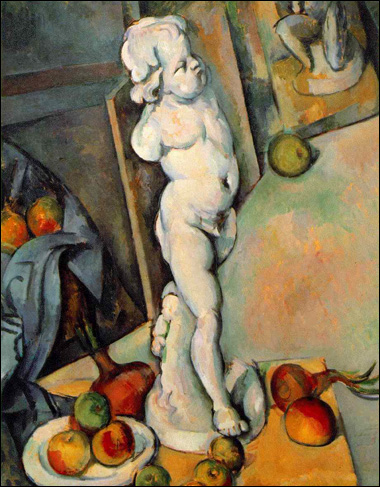In the late 19th century, Paul Cézanne, a French oil painter, became the first artist of his generation to deliberately and successfully break away from Impressionism. Cézanne was a forerunner to the Cubism of Picasso, and his work became a catalyst for the abstract art of the 20th century.
His earlier work tended to be darker and more roughly painted, but we can still see some of his personal style developing in it. For example, in the above detail of his painting Skull and Candlestick you can see dark outlines around many of the objects, a trait which remained to some extent in most of his later works as well.
Throughout his life, Cézanne didn’t want to paint like the Impressionists; their work was too loose and chaotic for him. But at the same time, the idea of painting classically structured work, like that of the Renaissance, didn’t appeal to him either.
Ultimately, Cézanne found a balance between the two—creating solidly anchored shapes and figures, while using the bold, lifelike colors of the Impressionists. He was also willing to sacrifice an accurate depiction of reality if it strengthened the painting.
Cézanne panted in every genre, and was successful in landscapes and portraiture as well as the still life work which he’s best known for. Mont Sainte-Victoire is one of his many paintings of the area around his home, showing cube-like houses and bulky, round trees.

With dark shadows to hold the form of his subject, Cézanne put brushtrokes of purples, greens, and vivid reds in his paintings. They don’t fit the skin tone, but like the Impressionists Cézanne created a sense of immediacy through using vibrant colors.
This last painting, Still life with Plaster Cupid, is one of my favorite works by Cézanne.
In this painting, Cézanne ignored the realities of the physical space in favor of creating a dynamically interesting composition.
The plaster cupid was perfect for Cézanne’s cold blues and greens, while its rounded anatomy (deliberately emphasized by Cézanne, I’m sure) echoed the scattered onions and apples. Plus, to my eyes, the amount of lights and darks in the painting are perfectly balanced, and I love how the entire painting is infused with energy from its many strong diagonals.
Cézanne’s work always makes me want to paint like him; disregarding the rules of color, or changing perspective on the fly. Because despite all that, his paintings are still marvelous, solid, and believable.
If you’d like to see more work by Paul Cézanne, you can browse through a lot of his paintings—in poster form—here at art.com.
This post may contain affiliate links.




